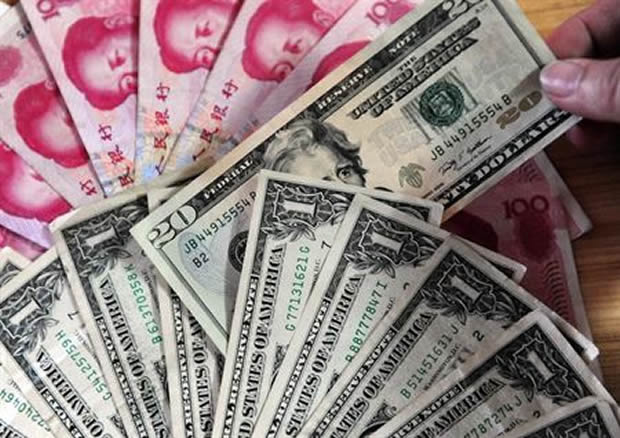2015 Will be Crucial for Future of the Renminbi

Since the United States announced an end to its quantitative easing (QE) programs in late October, the US dollar has begun to strengthen, weakening other currencies. China’s economic growth this year is expected to slow down further and will be crucial to see whether the renminbi can follow its long-term set policy in the internationalization of the currency to remain stable.
The US Federal Reserve in November 2008 introduced its QE program to counter the effects of the global financial crisis and continued to implement QE2 and QE3 to inject huge funds into financial markets. When the Fed in mid-2013 said it planned to end QE, it immediately created waves in international financial markets until the announcement in late October for the complete exit of QE.
During the period after the Fed announced the end to QE, many analyses predicted that following the recovering US economy and trending higher interest rates in the future, the US dollar would strengthen, funds would flow back to the US and affect Beijing’s policies to maintain stable economic growth, with the renminbi therefore facing downward pressure. However, while the US dollar index has risen to the highest level since April 2006, other currencies all fell except the renminbi, which maintained comparatively stable against the US dollar and therefore rose against other global currencies.
How long the renminbi can maintain such strength has concerned global investors. Former Fed chairman Alan Greenspan believes the QE exit will have a major impact on countries that rely on exports, but the QE impact on China will be limited as the country’s China’s economic development is better than other emerging economies. Some foreign currency analysts said the renminbi should accelerate its internationalization but if the currency sees sharp depreciation during the process, trade partners will reduce their use of it. In a bid to reach the Chinese government’s long-term goal, the renminbi must maintain its stability even if China has to sacrifice a degree of export competitiveness.
It is therefore not surprising to find that China’s economic growth and export growth are slowing, because the EU and Japan represent China’s biggest and third-biggest trading partners, respectively. Since the second half of last year the European Central Bank (ECB) has introduced a series of non-traditional monetary polices, such as negative interest rates, to guide the depreciation of the euro in a bid to beat deflation, with the euro so far having depreciated more than 10% against the US dollar. While the Japanese yen has been trending weaker since Prime Minister Shinzo Abe introduced his “Abenomics” economic reforms and after the US announced the QE exit, Japan suddenly expanded its loose monetary policy, resulting another round of depreciation to 120 yen against the US dollar. The depreciation of the two major economies, together with the declines of other Asian currencies, have a major impact on China’s trade competitiveness.
Meanwhile, OPEC has disregarded weak demand for oil due to slowing economic growth by maintaining production, resulting in oil price tumbles hitherto unseen, plunging more than 40% from a recent peak of US$105 per barrel in June.
Accordingly, major oil exporters such as Russia, Iran and Venezuela have been driven into financial instability that makes them naturally move closer to China, either signing oil or natural gas supply contracts with China using the renminbi for payment or inking currency swap agreements and no longer using the US dollar for payment. These are all steps that help establish the foundation for the internationalization of the renminbi.
However, allowing the renminbi to become a strong currency like the US dollar for the sake of China’s prestige will be a double-edged sword, definitely involving paying a price with declining export competitiveness and slowing economic growth. In the end, the direction of the renminbi will be the most important benchmark for how long China can endure its slowing economy. Taiwan’s central bank should prepare well for the new changes as the Taiwan dollar is closely related to both the US dollar and the renminbi.
